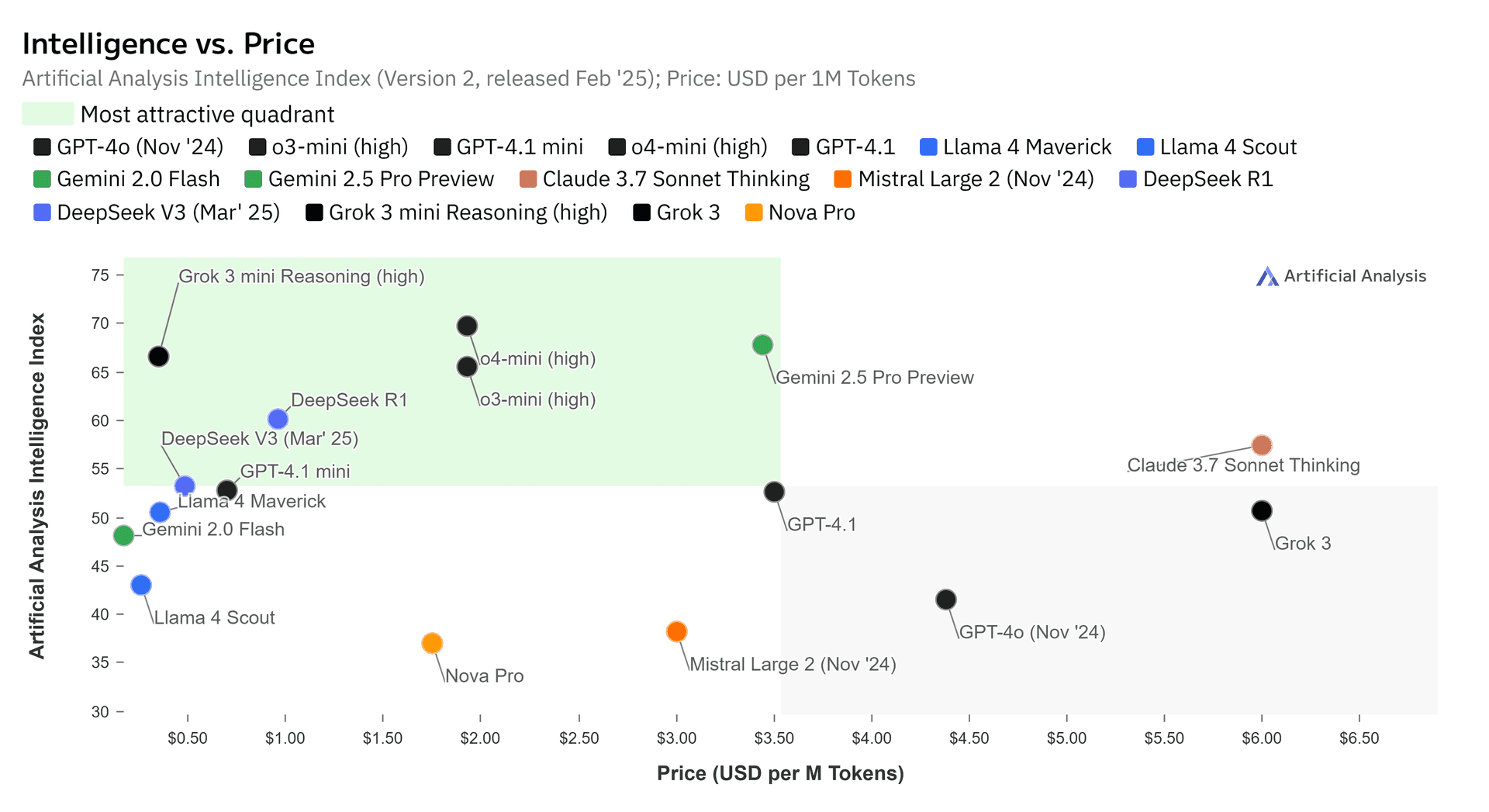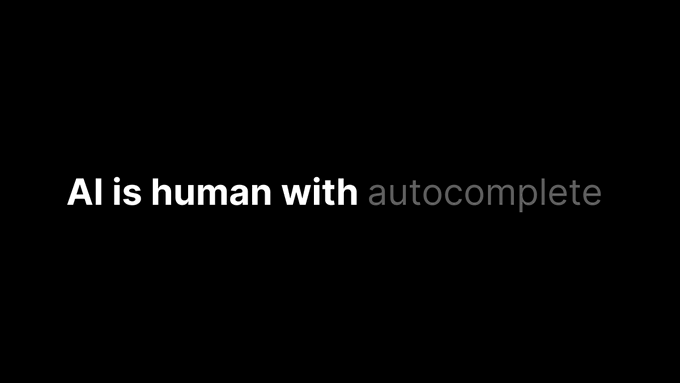AI: Price vs. Intelligence in 2025
• 0 views
The world of AI, especially Large Language Models (LLMs), is changing incredibly fast. By April 2025, these systems can handle more and more complicated things – writing stories, helping with code, and even doing in-depth analysis. As they get better, there are more options than ever, each with different abilities, ways to use them (like cloud services or running them on your own computer), and, most importantly, prices. So, for anyone using or building with these tools, the big question is: how much does the "smartness" of an AI really cost right now?
Figuring Out "Smartness" and Using Ratings
It's tricky to say exactly how "smart" an AI is because it depends on what you need it to do. Is it about getting facts right, thinking logically, being creative, working quickly, or following instructions well? There are tests that try to measure these things, but it's hard to boil it down to a single score.
ArtificialAnalysis is a great place to get a sense of what's out there. They have comparisons and ratings for different AI systems, including a chart that looks specifically at Intelligence vs. Price. They update their methods regularly – the latest version, released in February 2025, uses tests like MMLU-Pro and GPQA Diamond. By looking at how well AIs reason, their knowledge, and how good they are at writing code, along with how much they cost to use, ArtificialAnalysis.ai helps you see which ones give you the most bang for your buck. In general, their charts show that smarter AIs cost more, but there are definitely some that are better deals than others.

A Reality Check: What They Can't Do
Recent reports also show how the price and performance of AIs are changing. The Stanford AI Index 2025 report, released on April 7, 2025, points out that AIs are getting more efficient and affordable. The report says that the cost of using an AI as good as GPT-3.5 (based on MMLU accuracy) has dropped dramatically since 2022. This means you can get a certain level of "smartness" for much less money because of improvements in both the AIs themselves and the computers they run on.
Even though the best AIs can do some amazing things, it's important to remember they aren't perfect.
As shadcn joked in a popular tweet:
This tweet is a good reminder that even the most expensive AIs make mistakes. They can confidently tell you wrong information (because they're using old data or just making things up), have trouble following instructions exactly, and don't really "understand" what they're doing. The mention of a "cheaper, faster asian version" highlights that AI is being developed all over the world, which means there are even more options when it comes to price and performance. Ultimately, a truly "intelligent" AI is still a long way off, and the ones we have now have limits.
This means that how "smart" an AI seems in the real world isn't just about its test scores or how much it costs. It also depends on how well you give it instructions (prompt engineering), how complicated the task is, and how well you can judge whether the AI's answer is actually good.
Picking the Right One: Balancing Cost and What It Can Do
Choosing an AI is about finding the right balance. For simple, common tasks like summarizing text, a cheaper, less powerful AI might be good enough. But for things that require careful thinking, accurate facts about specific topics, or creative ideas, you might need to spend more on a better AI. Sites like ArtificialAnalysis.ai can help you compare these options and decide what makes sense for your situation and budget.
What's Next: More Efficient and Accessible AIs
Things are always changing. Researchers are working on new ways to build and train AIs so they can be smarter without needing as much computing power. Competition between AI companies will likely also bring prices down. The Stanford AI Index 2025 report also noted that open-source AIs are quickly catching up to the ones that are kept secret, which could make them more affordable and change the market.
In short, as of April 2025, there's a clear trade-off between the price of an AI and how "smart" it is. While ratings from sites like ArtificialAnalysis.ai and reports like the Stanford AI Index 2025 are helpful, it's important to remember the limitations and quirks of these systems. The best approach is to understand what an AI can and can't do, use it for the right tasks, and always think critically about its output. As AI gets better, finding the best balance between cost and performance will continue to be a key challenge.
